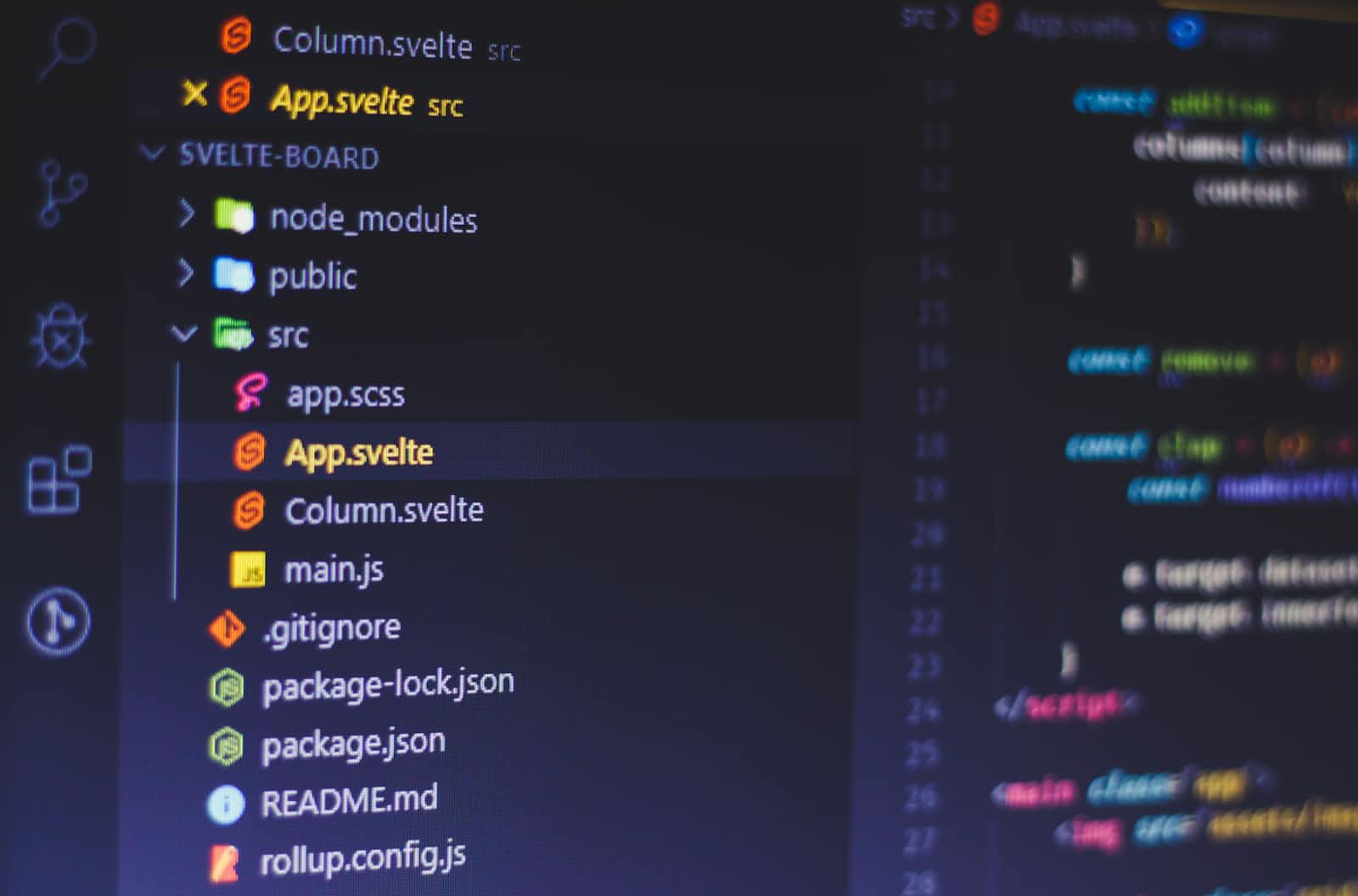Svelte Vs. React: Right tool to learn
 Krishnam Maheshwari
Krishnam Maheshwari
After entering the world of web development, and exploring a little bit of HTML, CSS and JS you must choose the frameworks you wanna work on. You may find a bunch of frameworks but here we'll be comparing one of the most popular frameworks React and the most admired one Svelte. In this guide, you will get an idea of which framework to choose out of Svelte or React for your work case.
Learning Curve and Syntax
The learning curve and syntax of a framework play a crucial role in a developer's ability to work efficiently. Let's see how Svelte and React differ in this regard with an example.
React:
React uses .JSX (JavaScript Syntax Extension), a syntax that closely resembles HTML. JSX allows developers to write HTML-like code within JavaScript, facilitating the creation of React components. Adapting to JSX syntax makes React's learning curve much steeper for beginners.
import React, { useState } from 'react';
const Counter = () => {
const [count, setCount] = useState(0);
const increment() {
setCount(count + 1);
};
const decrement() {
setCount(count - 1);
};
return (
<div>
<h1>The Count is: {count}</h1>
<button onClick={increment}>Increment</button>
<button onClick={decrement}>Decrement</button>
</div>
);
};
export default Counter;
Above is an example of a counter in react, which seems unfamiliar to vanilla JS. Here, useState is used to create reactive component "count". We will look into working of these components in detail further down the road.
Svelte:
Svelte's syntax is straightforward and intuitive, making it beginners's friendly. Svelte applications consist of three main parts: an HTML template, a JavaScript section, and a CSS section. These components are typically combined within a single .svelte file, promoting a cohesive and organized code structure.
<script>
let count = 0;
function increment() {
count += 1;
}
function decrement() {
count -= 1;
}
</script>
<main>
<h1>The Count is: {count}</h1>
<button on:click={increment}>Increment</button>
<button on:click={decrement}>Decrement</button>
</main>
Here is an example of a counter program in Svelte, that looks very similar to vanilla JS. So, developers with knowledge of Javascript can easily understand working of this program.
Both Svelte and React provide efficient ways to build UI components, Svelte's syntax closely aligns with vanilla JavaScript making it more accessible for developers with existing JavaScript knowledge. React's JSX syntax, although powerful and expressive, requires developers to learn a new way of writing HTML-like code within JavaScript.
Performance
Performance is a critical factor in front-end development, as it directly impacts the user experience. For comparing their performance we need to know how these frameworks handle rendering and updating the user interface. We'll not go into much depth but give a rough idea of how they distinguish themselves from others.
React:
React uses a virtual DOM(VDOM) as an abstract of the actual DOM. So, when a component's state/props change, React creates a new virtual DOM representation of the entire UI. After identifying the necessary changes, React updates the real DOM, applying only the specific changes rather than re-rendering the entire UI. This enables efficient updates and minimises direct manipulations of the real DOM.
Svelte:
On the other hand, Svelte's rendering process occurs at build time rather than runtime, which distinguishes it from many other frameworks, including React. When you write code in Svelte, the framework compiles the components during the build process, generating highly optimised JavaScript code. Svelte's compiler analyses the components and their dependencies, and efficiently tracks changes in state/data within the components. When these changes occur, Svelte generates and applies optimised JavaScript code that directly updates the necessary parts of the DOM without relying on a virtual representation of the DOM.
The minified and gzipped version of Svelte is around 1.8 KB, while React and ReactDOM together are around 44.5 KB. Svelte's smaller bundle size means faster loading times, better responsiveness, and lower bandwidth costs.
Svelte's compilation-based approach and elimination of the Virtual DOM result in faster load times and rendering. React's Virtual DOM reconciliation process minimises unnecessary UI updates, ensuring optimal performance. Svelte's mechanism works better on smaller projects but for high-scale projects React performs better.
Documentation & Community Support
React:
React boasts extensive third-party libraries and tools covering various development aspects, including state management, routing, and styling. React's documentation is detailed, offering clear explanations, code examples, and guides. It is regularly updated to ensure developers have access to the latest features and best practices.
Backed by a vast and active community, React provides a wealth of resources, tutorials, discussions, and open-source contributions, facilitating learning and problem-solving.
Svelte:
Svelte's ecosystem, though more compact, provides essential and integrated tools that align with its philosophy of simplicity and efficiency. Svelte's documentation is highly praised for its clarity and conciseness. It efficiently guides users through the framework's concepts, making it approachable for beginners.
The Svelte community, while smaller, is rapidly growing and enthusiastic. Active participation in forums, discussions, and open-source projects fosters a supportive environment and knowledge sharing.
Conclusion
In the ongoing discussion of React versus Svelte, the choice emerges not as a matter of one framework being definitively better than the other, but rather about aligning their strengths with your specific project goals. For beginners who just started and aim to build small projects like personal portfolios or streamlined websites, Svelte stands out. Its simplicity, speed, and minimal setup cater to rapid development without unnecessary complexities. Conversely, React takes the lead when complexity and scalability are paramount. Developers aiming to create highly flexible, scalable applications, serving diverse use cases across multiple platforms, should go for React. With its robust ecosystem, extensive libraries, and wide popularity, React is the ideal choice for larger, multifaceted web applications.
Ultimately, the decision hinges on matching the strengths of each framework with the specific project requirements and the intended scale of development. If you have a clear idea about your project, begin with one of these frameworks.
Resources link
Subscribe to my newsletter
Read articles from Krishnam Maheshwari directly inside your inbox. Subscribe to the newsletter, and don't miss out.
Written by
